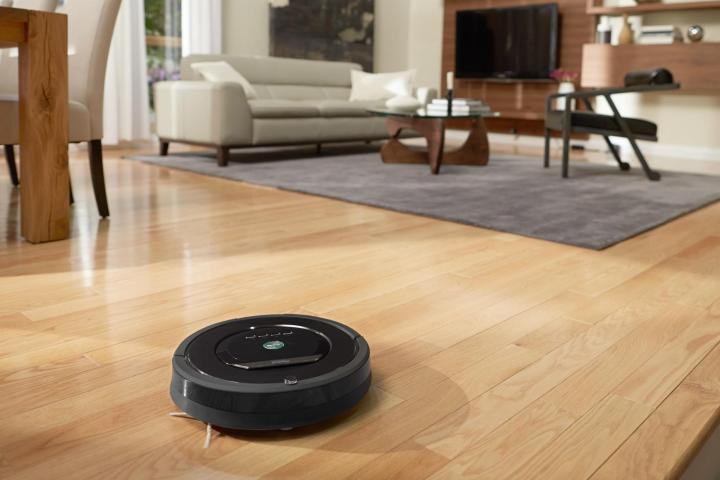
But that’s only the beginning, iRobot’s CTO Paolo Pirjanian told Digital Trends at CES 2015. Once the robots have that detailed map, it can start recognizing objects. That could eventually lead to robots that fold your laundry and unload the dishwasher. “We are working on developing a more practical manipulator technology which is lower cost and safe around humans,” Pirjanian sad. “Combined with our perception and 3D-modling of the environment, we believe we will be able to do the things we are talking about.”
While it’s not quite there yet, one mapping system that iRobot is working on utilizes Simultaneous Localization and Mapping technology to map the layout of a room using budget-friendly cameras and identifies objects with a cloud-based, object-matching function. Later this year, iRobot will use this technology as part of its smart-home solution. The company wants to make smart homes more intelligent by thinking of the whole house as more of a “system,” co-founder and CEO Colin Angle told Mashable. As it stands right now, there are plenty of devices on the market that are designed to simplify everything from coffee making to door locking. However, one key feature is missing from the smart-home equation: synchronization.
“The map becomes [a] construct for tasking a growing team of robots that are in your home,” Angle said. With the home and all the smart devices mapped out, devices would be able to communicate with each other and use the map’s information to work more efficiently. There’s no guarantee that other smart device makers will be on board with iRobot, though. Without third-party developer support and integration, iRobot’s system would have little use in any household. However, Angle said that he’s well aware of the need for partnerships in the future.
The smart home system is expected to debut later in 2015. Thus far, iRobot has not revealed details on pricing, though Angle hinted that because the smart-home solution will work with existing Roombas, it could be an add-on.
Editors' Recommendations
- iRobot Roomba Combo j9+ vs. iRobot Roomba Combo Essential: Which is better for you?
- Home Depot’s Hubspace is a great way to start building your smart home
- Echo Hub vs. Echo Show 8: Which is the best option for your smart home?
- Nest Hub Max vs. Skylight Cal Max: Which is best for your home?
- The 5 best smart ceiling fans for your home in 2024


